Smart Applications of Holography and Robotic Arms myCobot 320 M5Stack-Basic
-
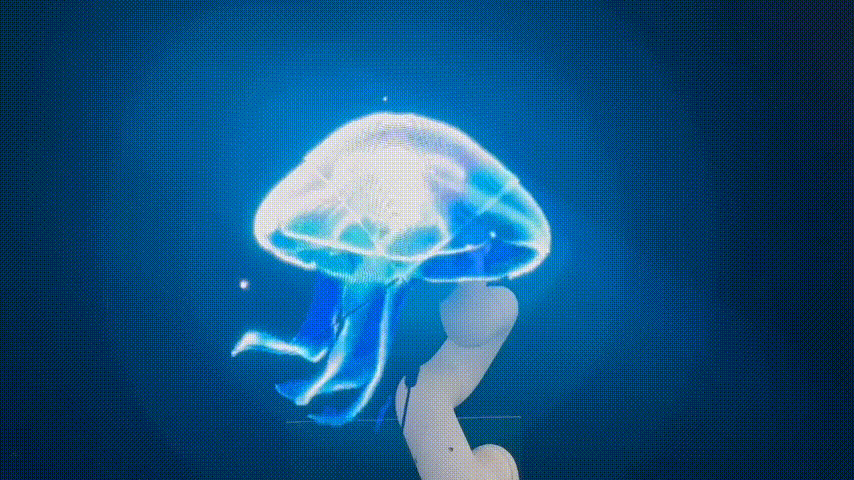
Introduction
Do you think this display is innovative and magical? Actually, this is a technology called holographic projection. Holographic technology has become a part of our daily lives, with applications covering multiple fields. In the entertainment industry, holographic technology is used in movie theaters, game arcades, and theme parks. Through holographic projection technology, viewers can enjoy more realistic visual effects, further enhancing their entertainment experience. In the medical field, holographic technology is widely used in medical diagnosis and surgery. By presenting high-resolution 3D images, doctors can observe the condition more accurately, improving the effectiveness of diagnosis and surgery. In the education field, holographic technology is used to create teaching materials and science exhibitions, helping students better understand and master knowledge. In addition, holographic technology is also applied in engineering manufacturing, safety monitoring, virtual reality and other fields, bringing more convenience and innovation to our lives. It is foreseeable that with the continuous development of technology and the continuous expansion of application scenarios, holographic technology will play a more important role in our future lives.
(Images from the internet)The main content of this article is to describe how to use myCobot320 M5Stack 2022 and DSee-65X holographic projection equipment to achieve naked-eye 3D display.
This project is jointly developed by Elephant Robotics and DSeeLab Hologram.
DSee-65X holographic equipment:
We take a brief look at how the holographic influence is generated.The holographic screen is a display device that uses the technical principle of persistence of vision (POV) (after-image of moving objects) to achieve 3D holographic visual enhancement effect, air suspension, holographic stereo display effect by rotating imaging with ultra-high density LED light,break the limitation and boring of traditional flat display, real-time synchronization and interactive development can also be carried out, leading the new trend of commercial holographic display industry.DSee-65X is a product of DSee Lab Hologram, a company that specializes in holographic technology.
DSee-65X: high resolution, high brightness, supports various content formats, WiFi connection, APP operation, cloud remote cluster control, unlimited splicing for large screen display, 30,000 hours of continuous operation.
Here is a video introduction of DSee-65X.
https://youtu.be/UDXlNgjwQ8c
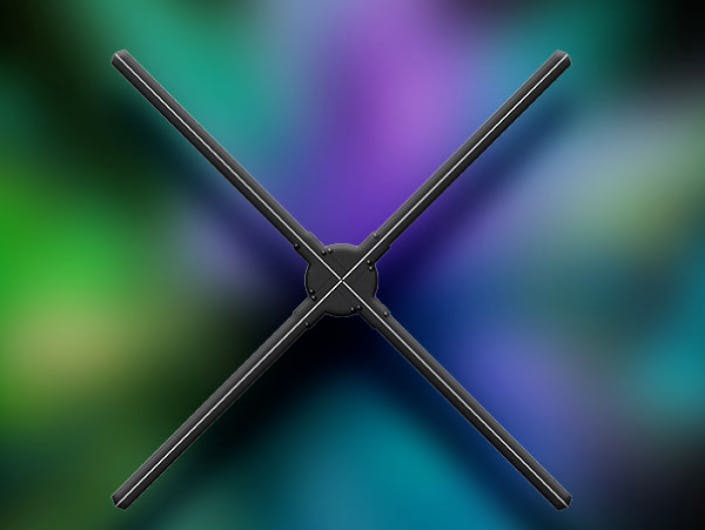
myCobot 320 M5Stack 2022
myCobot 320 M5Stack is an upgraded version of the myCobot 280 product, mainly suitable for makers and researchers, and can be customized according to user needs through secondary development. It has three major advantages of usability, safety, and economy, with a sophisticated all-in-one design. The myCobot 320 weighs 3kg, has a payload of 1kg, a working radius of 350mm, and is relatively compact but powerful. It is easy to operate, can collaborate with humans, and work safely. The myCobot 320 2022 is equipped with a variety of interfaces and can quickly adapt to various usage scenarios.
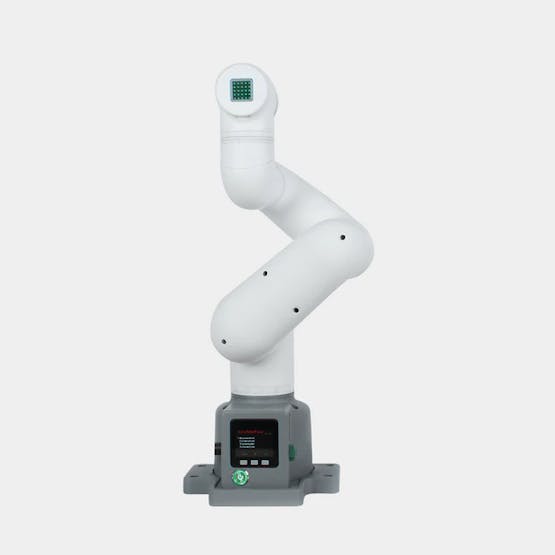
Here is a video presentation of the myCobot 320 M5Stack 2022
https://youtu.be/B14BS6I-uS4Introduction of the two devices complete, next step is to combine the holographic device with the robotic arm to work together. The operation of this project is very simple and can be divided into two steps:
-
Install the DSee-65X at the end of myCobot 320.
-
Control myCobot 320 to perform a beautiful trajectory to display the holographic image.
Project
Installation
DSee-65X and myCobot320 M5Stack 2022 are products from two different companies. When we received them, we found that we couldn't directly install the holographic device on the end of myCobot320. Therefore, we needed to modify the holographic device.
This is the structure at the end of myCobot320
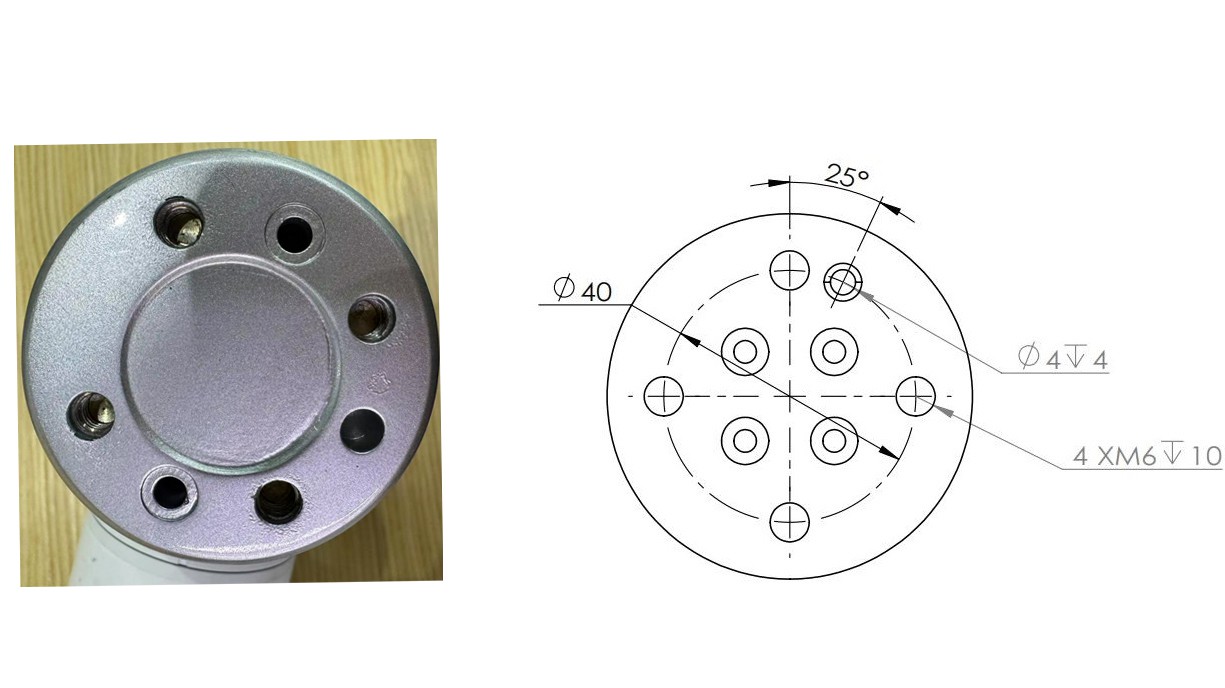
This is the DSee-65X
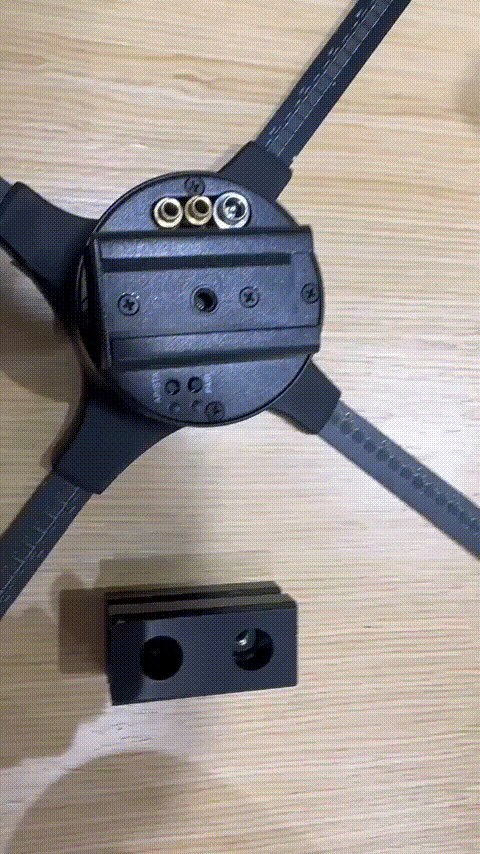
According to the provided information, we added a board as a bridge between them for adaptation.

The maximum load of myCobot320 can reach up to 1kg, so this modification is completely feasible for it.
Controlling Robotics Arm
Our goal is to design a trajectory for the myCobot 320 robotic arm that ensures an unobstructed view of the hologram display.
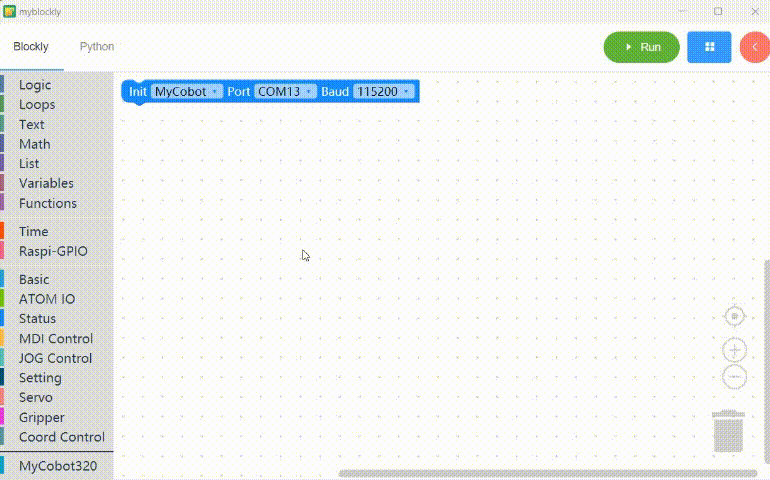
The myCobot 320 has a rich interface and supports Python, C++, C#, JavaScript, Arduino, ROS, and more. Next, we will program it. Here we use a very easy-to-learn method. The method is to use myBlockly software for programming. myBlockly is a graphical programming software that allows code to be written by drag and drop.
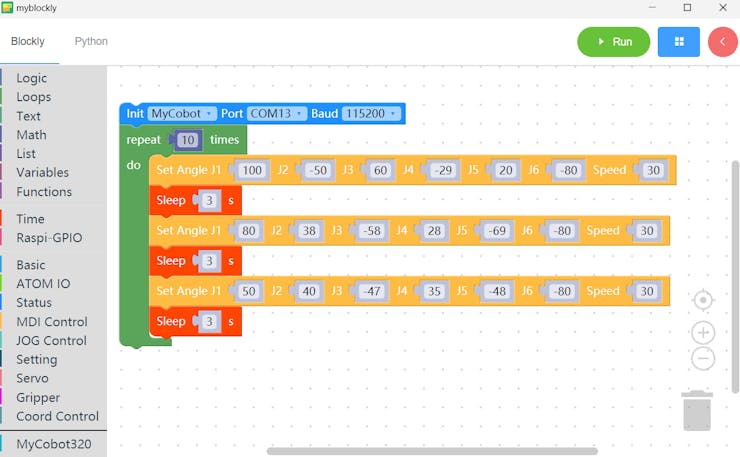
The code in the picture is a graphic code for the trajectory of the myCobot 320.
myBlockly's underlying code is written in Python, so we can also directly use Python code to control the robotic arm. The following is an example of Python code:
import time from pymycobot.mycobot import MyCobot mc = MyCobot('/dev/ttyUSB0') mc.set_speed(60) # move to a home position mc.send_angles([0, -90, 90, 0, 0, 0], 80) time.sleep(1) # move to a new position mc.send_angles([0, -90, 90, 0, 0, 30], 80) time.sleep(1) # move to another position mc.send_angles([0, -90, 90, 0, 30, 30], 80) time.sleep(1) # move to a final position mc.send_angles([0, -90, 90, 0, 30, 0], 80) time.sleep(1) mc.release_all_servos()Briefly explain how to use the DSee-65X.
DSee-65X has its own dedicated LAN. By connecting your computer to the same LAN, you can launch the software to make the holographic device work.

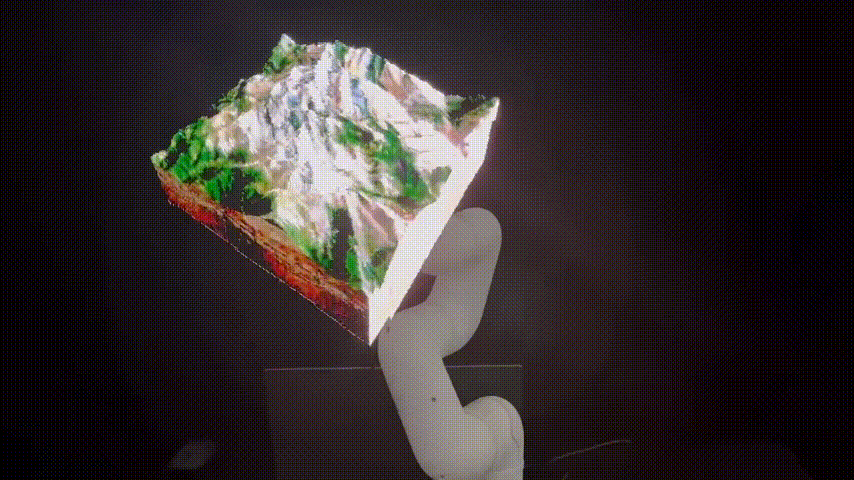
Summary
The whole process seems to be just a display of holographic imaging device with the robotic arm serving as a support. However, we can imagine more possibilities by using holographic projection technology to project 3D models or images into space and then capturing users' movements or gestures with sensors or cameras to control the robotic arm. For example, in manufacturing or logistics industries, combining robotic arms with holographic technology can achieve more efficient production and logistics operations. In the medical field, using robotic arms and holographic technology can achieve more precise surgery and treatment. In short, combining robotic arms and holographic technology can bring more intelligent and precise control and operation methods for various application scenarios, improving production efficiency and work quality.
These are all areas that require creative minds like yours to put in effort and develop! Please feel free to leave your ideas in the comments below and let's discuss together how to create more interesting projects.
-
-
Just my comment about the missuse of the words "hologram" and "holography":
Displaying a stereoscopic or augmented reality image that seems to be floating in the room has nothing to do with holograms or holography. It is impressive YES, but it is NOT a hologram. Why do I know this? Look at my nickname! I have made my own REAL optical holograms for many years. They are made by interfering high-coherent wavefronts coming for a laser source and recording the resulting pattern in a 2D surface. There are different types of setup but all have in common the interference of a reference-beam with a object-beam. See https://en.wikipedia.org/wiki/HolographyHowever, mounting a real hologram on a robot arm and move it around is also possible. In case of a hologram that changes its displayed content by the angle of the light source it can be very impressive!
-
@holofloh
Thank you for your comment!
We have also looked up relevant information and realized that this is not holographic technology, which was our mistake. The technology we used in the project is auto-stereoscopic imaging technology, based on the principle of Perspective Of View (POV), which does not achieve as good of an effect as holography。
Thank you once again for your message! We will try to use real holographic technology in combination with robotic arms in the future! -
Hi, how can I get the DSee-65X's information?
-